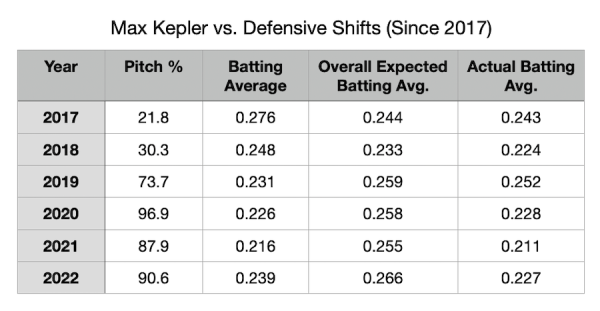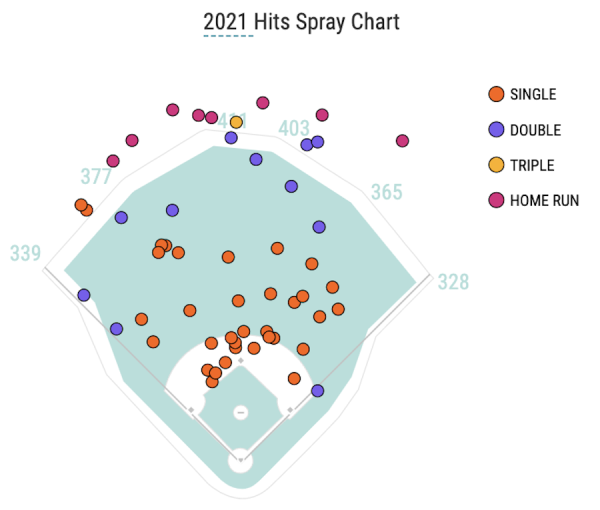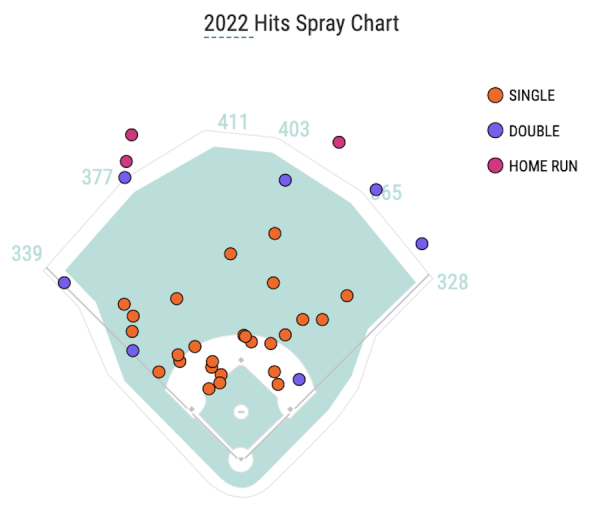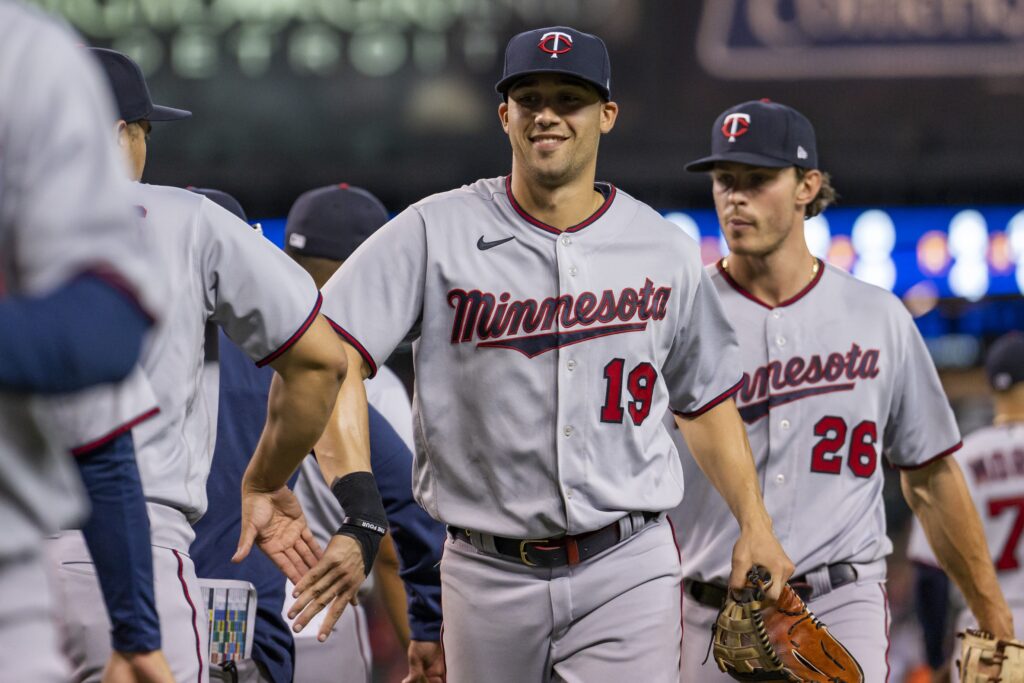The sounds of spring training have hit Fort Myers. If you’re lucky enough to make the trip south, you’ll see the Minnesota Twins in action with the brats sizzling on the grill, the crack of the bat and all the other sounds of summer. But this year’s rendition has a different soundtrack as players gripe over the new rules.
Friday’s spring training opener between the San Diego Padres and Seattle Mariners saw Manny Machado become the first player to get called for a pitch clock violation and with many commenting on the larger size of the bases, baseball will definitely look and sound different in 2023.
However, the biggest change is the banning of the shift. The new rule states that four players must be on the infield dirt with two on each side of the bag, which should increase contact and put more balls in play – and some players will benefit from the changes more than others.
So which Twins could be happy the shift is gone? Let’s take a look.
Joey Gallo
Gallo has become MLB’s poster child for the shift as he faced it in over 80 percent of his at-bats since 2017. According to Baseball Savant, Gallo saw the shift in over 90 percent of his at-bats in three straight seasons from 2019-21 and batted against the shift in 86.3 percent of his at-bats in 2022.
A common look for Gallo was against four outfielders as he saw it on 545 pitches faced since 2017. The next closest was Anthony Rizzo, who saw four outfielders on 268 pitches. With teams playing Gallo like a home run derby, he hit .183/.319/.409 in 336 games from 2020-22.
“I get the defensive strategies,” Gallo told The Athletic’s Jason Stark last February. “I do. I’m 100 percent not against that. But I think at some point, you have to fix the game a little bit. I mean, I don’t understand how I’m supposed to hit a double or triple when I have six guys standing in the outfield.”
After signing Gallo to a one-year, $13 million deal this offseason, the Twins are hoping that he can come closer to his 2019 production, where he hit .253/.389/.598 with 22 homers in 70 games en route to his first All-Star appearance.
The 29-year-old will need to clean up his league-high 39.8 percent strikeout rate – which was actually higher against four-man outfields – but perhaps seeing more open grass will allow Gallo to use the entire field and raise his production.
Max Kepler
Much like Gallo, Kepler is another hitter that has been slowed down by the shift. Many attribute his breakout 2019 season – where he hit .252/.336/.519 with 36 homers and 90 RBI – to a juiced-up baseball but his downfall has come with the advent of the shift.
In 2017 and 2018, teams used the shift against Kepler in 26.2 percent of his pitches faced. Teams started using the shift against Kepler at a 73 percent rate in 2019 and have used it on 90 percent of his pitches faced over the past three seasons.
This decision has worked well for opposing managers as Kepler is hitting just .227 against the shift and .220/.314/.392 overall since 2019.

These numbers show why Kepler’s numbers have slipped despite ranking in the 93rd percentile in maximum exit velocity, the 80th percentile in expected batting average and the 74th percentile in expected wOBA last season. It’s also why Rocco Baldelli said that the shift has taken a mental toll on Kepler over the past couple of seasons.
“[Baldelli] brought up that the shift, really the last couple of years, has gotten into [Kepler’s] head,” KSTP’s Darren Wolfson said on SKOR North’s Mackey and Judd earlier this month. “[The shift] has played mind games with him. So there’s a thought that now with the rule change, that could really aid him more than any other player.”
The Twins tried to trade Kepler with this logic, but a deal never materialized, leaving them to test the theory out for themselves.
Alex Kirilloff
Nobody on the Twins’ roster has seen the shift to the lengths that Gallo and Kepler have, but if there’s a player that could have his potential unlocked without the shift, it could be Kirilloff.
Through the first two years of his career, Kirilloff saw the shift on just under 77 percent of pitches faced. Although Kirilloff hit .250 against the shift, it’s intriguing to wonder how much better he could be.
Kirilloff’s career has been up and down, but he has plenty of potential. Kirilloff hit .348/.392/.578 with 20 homers between Low-A Cedar Rapids and High-A Fort Myers in 2018 and .359/.465/.641 with 10 homers in 35 games with Triple-A St. Paul last season, but those numbers haven’t translated to the major league level.
A nagging wrist injury that required the shortening of the ulnar bone last summer is a big reason for Kirilloff’s struggles, but getting rid of the shift couldn’t hurt a player that has used the entire field throughout his career.


If his wrist issues are behind him, it could mean a breakout season for the 25-year-old.








